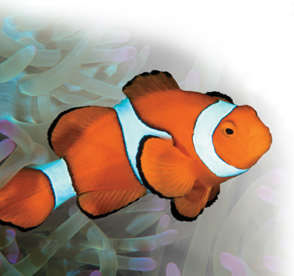Sexual Reproduction Recall from Chapter 11 that sexual reproduction involves meiosis, the process that produces haploid reproductive cells, or gametes. Gametes carry half the number of chromosomes found in body cells. Typically, male animals produce small gametes, called sperm, which swim. Females produce larger gametes called eggs, which do not swim. When haploid gametes join during fertilization, they produce a zygote that contains the diploid number of chromosomes.
MYSTERY CLUE

When investigators analyzed the baby shark's DNA, they found that it was homozygous for all the traits they examined, including two rare traits. Why was that unusual?
 Sexual reproduction maintains genetic diversity in a population by creating individuals with new combinations of genes. Because genetic diversity is the raw material on which natural selection operates, sexually reproducing populations are better able to evolve and adapt to changing environmental conditions. On the other hand, sexual reproduction requires two individuals of different sexes. So, the density of a population must be high enough to allow mates to find each other.
Sexual reproduction maintains genetic diversity in a population by creating individuals with new combinations of genes. Because genetic diversity is the raw material on which natural selection operates, sexually reproducing populations are better able to evolve and adapt to changing environmental conditions. On the other hand, sexual reproduction requires two individuals of different sexes. So, the density of a population must be high enough to allow mates to find each other.
In most animal species that reproduce sexually, each individual is either male or female. Among annelids, mollusks, and fishes, however, some species are hermaphrodites (hur MAF roh dyts), which means that some individuals can be both male and female or can convert from one sex to the other. In some species, individuals can produce eggs and sperm at the same time. Usually, these animals don't fertilize their own eggs, but exchange sperm with another individual. Some species, such as the clownfish in Figure 28–15, may change from one sex to the other as they mature.
Reproductive Cycles A number of invertebrates have life cycles that alternate between sexual and asexual reproduction. Parasitic worms and cnidarians alternate between forms that reproduce sexually and forms that reproduce asexually.
Parasitic worms such as blood flukes mature in the body of an infected person, reproduce sexually, and release embryos that pass out of the body in feces. If the embryos reach fresh water, they develop into larvae and infect snails, in which they reproduce asexually. Then the larvae are released, ready to infect another person.
Many cnidarians alternate between two body forms: polyps that grow singly or in colonies and medusas that swim freely in the water. The life cycle of a common jellyfish, Aurelia, is shown in Figure 28–16. In these jellyfish, polyps produce medusas asexually by budding. The medusas then reproduce sexually by producing eggs and sperm that are released into the water. After fertili-zation, the resulting zygote grows into a free-swimming larva. The larva eventually attaches to a hard surface and develops into a polyp that may continue the cycle.
 In Your Notebook Explain why a genetically diverse species can adapt more easily to disease and change.
In Your Notebook Explain why a genetically diverse species can adapt more easily to disease and change.

FIGURE 28–15 Hermaphrodites In this species of clownfish, Amphiprion percula, all individuals are born male and change to female as they grow. In some other hermaphroditic species, individuals are born female and change to male as they grow, or are both sexes at the same time.
Table of Contents
- Formulas and Equations
- Applying Formulas and Equations
- Mean, Median, and Mode
- Estimation
- Using Measurements in Calculations
- Effects of Measurement Errors
- Accuracy
- Precision
- Comparing Accuracy and Precision
- Significant Figures
- Calculating With Significant Figures
- Scientific Notation
- Calculating With Scientific Notation
- Dimensional Analysis
- Applying Dimensional Analysis




